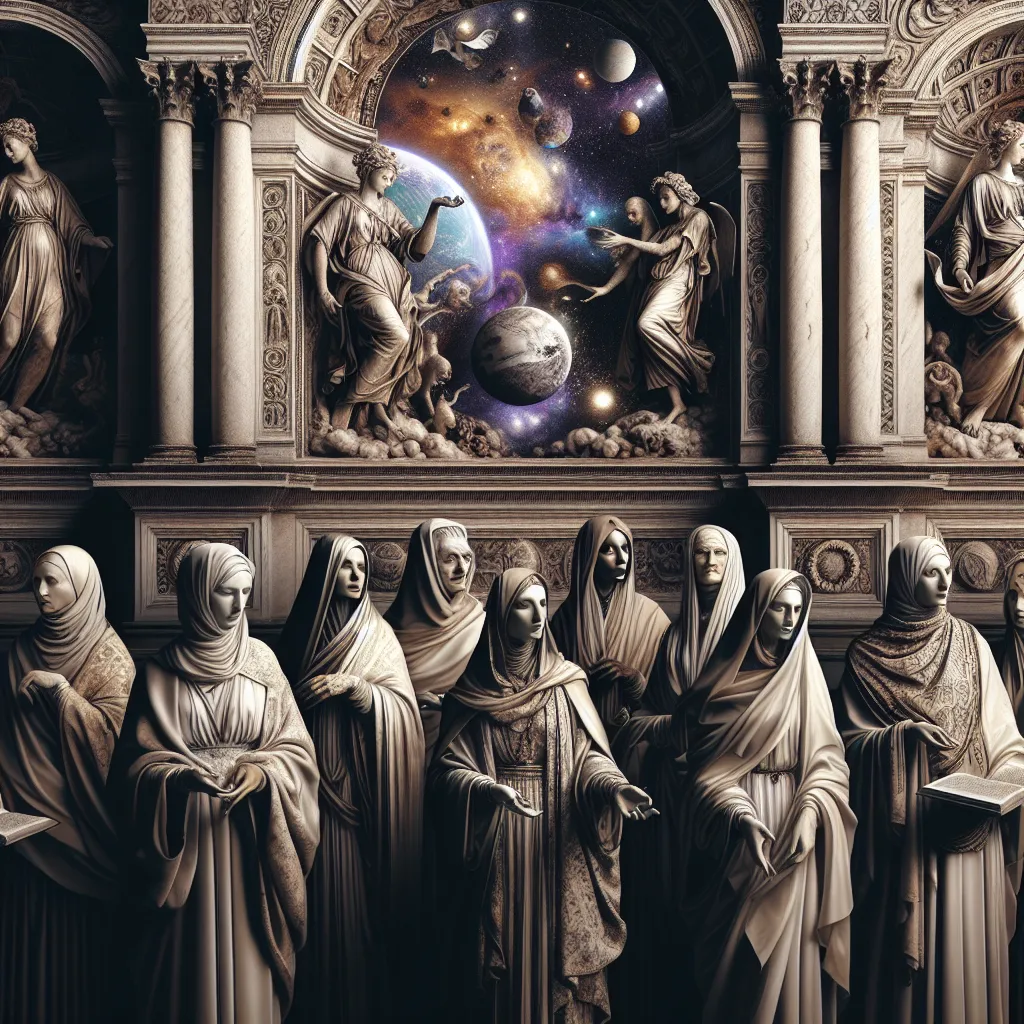
- Published on
- Authors

- Name
- You
The Völva: Prophetic Seers and Practitioners of Magic
The Viking Age, a period rich with myth and mysticism, reveres the Völva, a seeress who stood at the crossroads of fate and magic in Norse society. This article explores her role, the intricate traditions she upheld, and the deep symbiosis between science and mythology that defines her legacy.
The Historical Völva
The Völva's prominence emerges vividly in sagas and eddas, portraying her as a revered prophetess and a practitioner of Seiðr (a form of Norse magic and shamanism). Historical texts such as the "Völuspá"—a critical poem in the Elder Edda—illustrate the Völva's profound influence on Viking culture. Below, we shall delve into her practices and societal roles.
Völva in Norse Society
Roles and Responsibilities
- Prophecy: The Völva was primarily known for her ability to foretell the future. She used various methods, including casting runes and interpreting natural omens.
- Healing: Beyond their role as seers, Völvas were also healers, using herbs and chanting spells to cure ailments.
- Guidance in Warfare: Many Norse leaders sought the Völva's counsel before engaging in battles, believing that her visions could lead them to victory.
Significance in Myths
Völvas frequently appear in Norse myths. For instance, in the "Saga of Eric the Red", a Völva named Thorbjorg is described conducting a ritual to foretell the outcome of a famine. This saga provides insight into the ceremonial aspects of her craft, which included:
- The High Seat Ceremony: The Völva would sit on a specially prepared platform, enhancing her connection with the spiritual realm.
- Chants and Songs: Accompanied by special songs sung by a chorus, these chants were believed to open channels to the divine.
The Science of Prophecy: Decoding Mysticism
Modern science often approaches ancient practices with skepticism, yet some researchers have found intriguing scientific correlations:
Ritualistic Trance and Neuroscience
Neurological Studies on Trance States: The Völva's trance-like states align with research on how rhythmic drumming and chanting can induce altered states of consciousness. These findings suggest a physiological basis for the Völva's visions.
Herbal Knowledge: Historical references to Völvas include their use of herbs, some of which modern science acknowledges for their psychoactive or therapeutic properties. For example, the herb "Yarrow" (Achillea millefolium), used by Völvas, is now recognized for its medicinal properties.
| Ritual Component | Modern Scientific Insight |
|---|---|
| Chanting | Promotes neuroplasticity, enhances focus and memory |
| Herbal Remedies | Contains bioactive compounds with therapeutic effects |
| Trance States | Mimic effects similar to meditative brainwave patterns |
Conclusion
The Völva's harmonious blend of spirituality and practicality provided crucial support in Norse societies, melding prophecy with practical wisdom. By understanding the science behind her practices, we gain a deeper respect for the multi-faceted roles these ancient seeresses played. Her legacy underscores an enduring human quest to bridge the seen and unseen, the known and unknown—a timeless odyssey into the heart of mystery and the human condition.
Further Reading
- "The Viking Way: Religion and War in Late Iron Age Scandinavia" by Neil Price
- "The Poetic Edda: Stories of the Norse Gods and Heroes" translated by Jackson Crawford
Let us honor the memory of the Völva by continuing to seek knowledge, both scientific and mystical, to enrich our understanding of the cosmos and our place within it.
